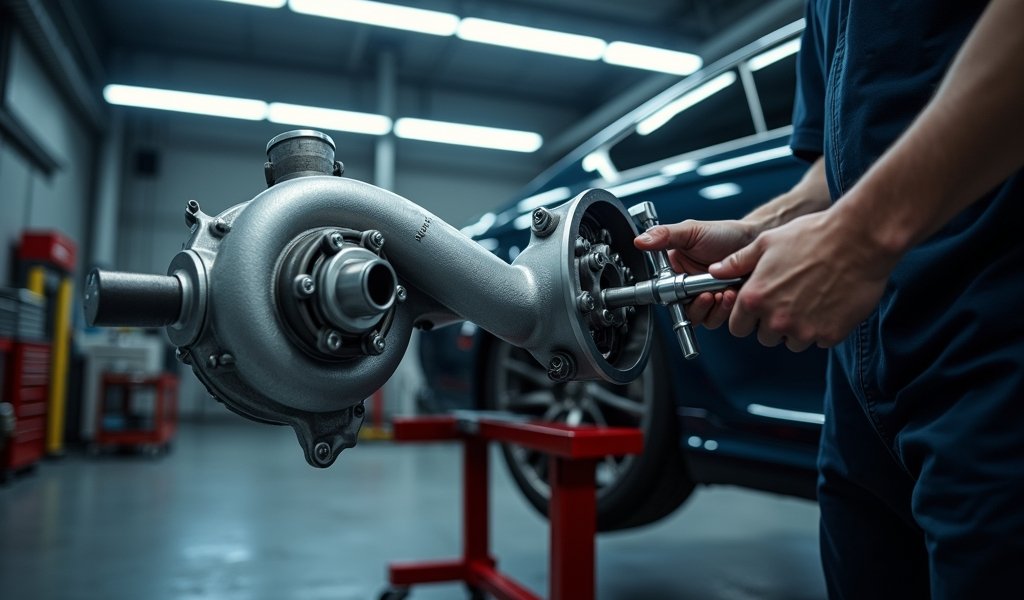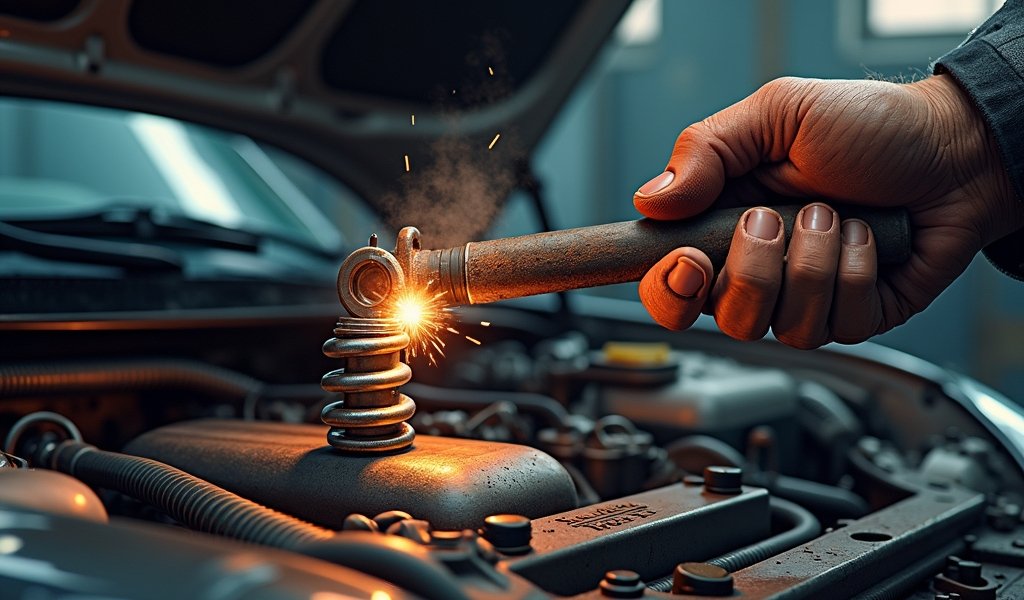Overview
This article explains how proper blow off valve spring tension is crucial for turbocharger health and performance, detailing adjustment techniques, common mistakes, and signs of incorrect tension. It emphasizes that finding the optimal tension protects your turbo from compressor surge, maintains consistent boost pressure, and delivers both improved performance and the signature “pshhh” sound enthusiasts desire.
Table of Contents
- Understanding Blow Off Valves
- The Importance of Spring Tension
- Finding Your Optimal Spring Tension
- Adjustment Techniques for Perfect Performance
- Common Mistakes to Avoid
- Upgrading Your BOV Spring
- Performance Benefits of Proper Spring Tension
- Conclusion
- Frequently Asked Questions
Understanding Blow Off Valves
Ever heard that satisfying “pshhh” sound when a turbocharged car shifts gears? That’s a blow off valve (BOV) doing its job. As a mechanic who’s tweaked hundreds of these beauties, I can tell you that blow off valve spring tension is the unsung hero behind proper BOV function.
BOVs are pressure-release valves that prevent compressor surge when you lift off the throttle. When you’re on the gas, your turbo builds pressure in the intake system. Then, when you suddenly let off, that pressure needs somewhere to go. That’s where your BOV steps in, venting that pressure either to the atmosphere (making that distinctive sound) or recirculating it back into the intake.
The spring inside your BOV is what keeps it closed during normal operation and determines how much pressure is needed to open it. Too tight, and it won’t release pressure properly. Too loose, and it’ll leak boost when you don’t want it to. Getting this tension just right is like finding the sweet spot on your favorite guitar—it makes everything sing.
When upgrading your ride with aftermarket turbo components, paying attention to your BOV spring tension becomes even more crucial as boost pressures increase.
The Importance of Spring Tension
Let’s talk about why blow off valve spring tension matters so much. Think of your BOV spring like Goldilocks—it needs to be just right. The spring tension directly affects three critical aspects of your turbo system:
First, response time. A properly tensioned spring ensures your BOV opens exactly when needed—not too early, not too late. This prevents compressor surge, which sounds like a flutter or chirping and can damage your turbo over time. According to research from the Society of Automotive Engineers, proper valve response can extend turbocharger life by up to 30%.
Second, boost retention. Your BOV spring needs enough tension to stay closed under normal boost conditions. Too little tension means boost leaks and poor performance—like trying to fill a bathtub with the drain partially open.
Third, pressure release. When you lift off the throttle, the spring must allow the valve to open with just the right amount of resistance. Too much tension, and pressure backs up into your turbo, potentially causing that harmful compressor surge.
The right spring tension creates that perfect balance where your turbo stays happy, your engine performs optimally, and you get that head-turning “pshhh” sound that tells everyone you’ve got something special under the hood.

Finding Your Optimal Spring Tension
Dialing in the perfect blow off valve spring tension isn’t rocket science, but it does require some methodical fine-tuning. Here’s how to nail it:
Start by understanding your setup. Different cars and boost levels require different spring tensions. A daily driver running 10 psi needs less tension than a track monster pushing 25 psi. Your BOV’s manual should suggest a starting point, but consider it just that—a starting point.
Listen to your engine. If you hear compressor surge (a rapid fluttering sound when letting off the throttle), your spring tension is likely too high. If you notice boost pressure dropping when you shouldn’t be venting, the tension is probably too low.
For precision tuning, get yourself a boost gauge if you don’t already have one. Watch how boost behaves when you let off the gas. Any unexpected drops might indicate your BOV is opening when it shouldn’t.
The step-by-step approach works best:
- Set your BOV to the manufacturer’s recommended tension
- Test drive and note any surge or premature venting
- Make small adjustments (usually 1/4 turn at a time)
- Test drive again
- Repeat until symptoms disappear
Remember that atmospheric conditions and altitude can affect optimal settings. What works perfectly on a cool morning might need adjustment on a hot afternoon. This is especially true if you’ve upgraded your intake with a high-performance cold air intake that alters airflow dynamics.
Adjustment Techniques for Perfect Performance
Now, let’s get our hands dirty with the actual adjustment process. Most blow off valves have an adjustment screw or nut that directly changes the spring preload. Here’s how to approach it like a pro:
Always start with a cool engine. Heat can expand components and give you false readings. When you’re ready to make adjustments, locate the adjustment point on your BOV—typically it’s a threaded collar, lock nut, or adjustment screw at the top.
For most BOVs, turning clockwise increases spring tension, while counter-clockwise decreases it. Remember: small adjustments make big differences. A quarter turn can completely change how your valve performs.
If you’re increasing tension, watch for that compressor surge sound—a fluttering or chirping when you let off the throttle. Once that disappears, you’ve found your minimum effective tension. From there, I recommend going just a quarter turn tighter for safety margin.
If you’re decreasing tension, listen for unexpected venting or watch your boost gauge for unexpected drops during normal driving. You want the valve to stay completely closed until you lift off the throttle.
Pro tip: Mark your starting position with a dot of nail polish or paint marker. This lets you count exact turns and return to your baseline if needed. This technique has saved me countless headaches during tuning sessions.
For precision tuning, consider partnering adjustments with performance ECU tuning to ensure your entire system works in harmony.
Common Mistakes to Avoid
After seeing hundreds of DIY BOV adjustments go wrong, I’ve cataloged the most common blow off valve spring tension mistakes you’ll want to avoid:
Overtightening is enemy number one. Many enthusiasts believe tighter is better, but cranking that spring down can prevent your BOV from opening at all. This leads to compressor surge, which sounds like rapid-fire fluttering and can damage your turbo’s bearings and seals over time.
Going too loose is just as bad. A spring that’s too loose will allow your BOV to open during normal boost conditions, causing power loss and sluggish acceleration. You might as well be driving with a boost leak.
Inconsistent testing is another pitfall. If you adjust your BOV and then test it under completely different driving conditions, you’ll never get accurate feedback. Try to test in similar conditions—same road, same temperature, same driving style.
Many folks also forget about altitude effects. Higher altitudes mean lower atmospheric pressure, which affects how your BOV operates. What works perfectly at sea level might need adjustment in the mountains.
Perhaps the biggest mistake is the “set and forget” mentality. Your BOV spring tension should be checked and potentially adjusted whenever you make significant modifications to your turbo system, boost levels, or even after seasonal temperature changes.

Upgrading Your BOV Spring
Sometimes, adjustment isn’t enough, and you need to consider upgrading your blow off valve spring entirely. Here’s when and how to make that call:
Consider an upgrade if you’ve maxed out adjustment range and still can’t achieve proper operation. This commonly happens when you’ve significantly increased boost pressure beyond what your stock BOV was designed to handle.
Most quality BOV manufacturers offer spring kits with various rates. For example, a “medium” spring might handle 8-15 psi, while a “heavy” spring covers 15-25 psi. Choose based on your actual running boost, not just your peak boost.
When selecting a replacement spring, quality matters tremendously. Cheap springs can weaken quickly or have inconsistent tension. I’ve seen bargain springs lose their tension after just a few heat cycles. Stick with springs from reputable manufacturers like Tial, TurboSmart, or GReddy.
Installation is straightforward but requires attention to detail:
- Relieve all pressure from the system
- Disassemble the BOV according to manufacturer instructions
- Note the orientation of all components
- Replace the spring
- Reassemble carefully, ensuring no pinched O-rings
- Start with middle-range tension and fine-tune from there
After upgrading, expect to spend some time dialing in the tension again. The adjustment process remains the same, but your baseline has changed.
Performance Benefits of Proper Spring Tension
Let’s talk rewards. Getting your blow off valve spring tension right delivers tangible benefits you’ll feel behind the wheel:
First and foremost: turbo protection. The primary job of your BOV is preventing compressor surge, which can reduce turbo life by thousands of miles. Proper tension ensures your expensive turbocharger stays healthy for the long haul.
You’ll also experience more consistent boost. A properly tensioned BOV maintains pressure exactly when needed and releases it precisely when required. This translates to smoother power delivery and better throttle response in real-world driving.
Many drivers notice improved transitional throttle behavior. That awkward moment between on-throttle and off-throttle becomes smoother, making your car more pleasant to drive in traffic or during spirited mountain runs.
And let’s not forget the sound. A properly adjusted BOV produces that clean, crisp “pshhh” that enthusiasts love, rather than the fluttering of compressor surge or the anemic whisper of a too-loose valve.
The best part? These benefits compound over time. Your turbo stays healthier, your engine runs more efficiently, and you enjoy a more responsive, satisfying driving experience. As Engine Labs explains, a properly functioning BOV is essential for maintaining turbocharger efficiency and longevity.
Conclusion
Mastering blow off valve spring tension might seem like a minor detail in the grand scheme of automotive performance, but it’s these small details that separate a properly running turbocharged car from one that’s just making noise.
The right spring tension creates a harmonious balance in your turbo system—protecting components, maintaining boost when needed, and releasing pressure at just the right moment. It’s an adjustment that costs nothing but time yet delivers significant performance benefits.
Remember to approach the process methodically, making small, incremental adjustments and testing thoroughly between changes. Listen to your engine, trust your instruments, and be patient. The perfect setting is a moving target that depends on your specific setup, driving conditions, and boost levels.
Whether you’re daily driving a lightly modified turbo car or pushing the limits at the track, proper blow off valve spring tension is your invisible ally, working behind the scenes to keep everything running smoothly. Take the time to get it right, and your turbocharger will thank you with years of reliable performance and that signature sound that never fails to turn heads.
Frequently Asked Questions
How do I know if my blow off valve spring tension is too tight?
You’ll hear a fluttering or chirping sound (compressor surge) when letting off the throttle. This happens because the valve isn’t opening quickly enough to release pressure.
Can blow off valve spring tension affect fuel economy?
Yes, improper tension can lead to boost leaks or compressor inefficiency. Either scenario forces your engine to work harder, potentially decreasing fuel economy.
How often should I check my BOV spring tension?
Check after any performance modifications, boost increases, or seasonal temperature changes. For most setups, a quick inspection every 6 months is sufficient.
Will changing blow off valve spring tension affect my car’s sound?
Absolutely! Spring tension directly affects how quickly and fully your BOV opens, which changes the sound characteristics. Proper tension usually creates a cleaner, crisper sound.
Can I adjust BOV spring tension without special tools?
Most BOVs can be adjusted with basic hand tools like wrenches or Allen keys. Some premium units may require specific spanners or adjustment tools that come with the valve.

